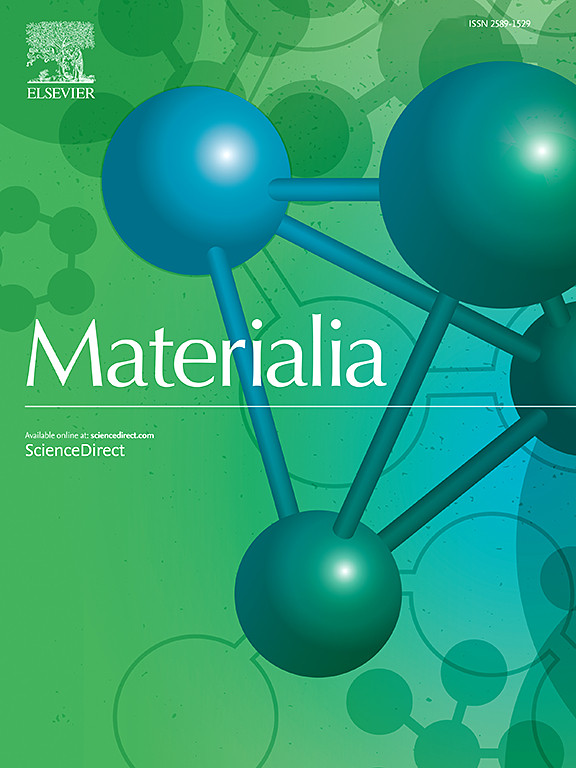Statically recrystallized grain size as a function of prior stored energy level in the A-286 Fe-based superalloy
IF 3
Q2 MATERIALS SCIENCE, MULTIDISCIPLINARY
引用次数: 0
Abstract
A-286 alloy is a Fe-based superalloy used in various engines and gas turbine components. During manufacturing, this alloy is submitted to a solution heat treatment that provides good formability for the subsequent deformation steps. Hence, a good control of grain size evolution is required to avoid the formation of a broad grain size distribution or the growth of abnormally large grains. In this work, a well-controlled strain gradient has been generated by means of indentation tests at room temperature. A specific strain level, calculated by finite element simulations, and the associated dislocation density estimated by the EBSD technique, lead to the activation of selective grain growth during heat treatment after a given incubation time. This study on cold-deformed A-286 alloy allowed a quantitative assessment of recrystallized grain size dependence on stored energy and the identification of the critical stored energy value for grain nucleation, providing a better understanding of A-286 static recrystallization behavior.
a -286铁基高温合金的静态再结晶晶粒尺寸与预先储存能级的关系
a -286合金是一种铁基高温合金,用于各种发动机和燃气轮机部件。在制造过程中,该合金进行固溶热处理,为随后的变形步骤提供良好的成形性。因此,需要对晶粒尺寸演化进行良好的控制,以避免形成宽的晶粒尺寸分布或异常大的晶粒生长。在这项工作中,通过室温压痕试验产生了一个控制良好的应变梯度。通过有限元模拟计算的特定应变水平,以及通过EBSD技术估计的相关位错密度,在给定的培养时间后,导致热处理过程中选择性晶粒生长的激活。通过对冷变形a -286合金的研究,可以定量评估再结晶晶粒尺寸对贮存能的依赖关系,并确定晶粒成核的临界贮存能值,从而更好地理解a -286的静态再结晶行为。
本文章由计算机程序翻译,如有差异,请以英文原文为准。
求助全文
约1分钟内获得全文
求助全文
来源期刊

Materialia
MATERIALS SCIENCE, MULTIDISCIPLINARY-
CiteScore
6.40
自引率
2.90%
发文量
345
审稿时长
36 days
期刊介绍:
Materialia is a multidisciplinary journal of materials science and engineering that publishes original peer-reviewed research articles. Articles in Materialia advance the understanding of the relationship between processing, structure, property, and function of materials.
Materialia publishes full-length research articles, review articles, and letters (short communications). In addition to receiving direct submissions, Materialia also accepts transfers from Acta Materialia, Inc. partner journals. Materialia offers authors the choice to publish on an open access model (with author fee), or on a subscription model (with no author fee).
 求助内容:
求助内容: 应助结果提醒方式:
应助结果提醒方式:


